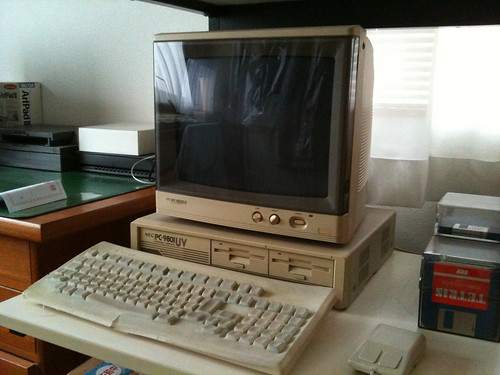A week ago, China’s Lenovo and Japan’s top-shared PC vendor NEC announced to merge their PC business and to establish a joint venture company.
Lenovo and NEC say they will create a joint venture to form the largest PC business in Japan.
The new entity, NEC Lenovo Group Japan, brings together Japan’s top PC company with China’s Lenovo, one of the biggest PC makers in the world.
Under the deal, Lenovo will own 51 percent of the joint venture, and NEC Corp. will hold 49 percent.
Businessweek
The news itself was widely covered on Chinese and English media, so I won’t repeat details here.
Coverage on Japanese media are even bigger. The reason is that NEC’s PC business has special meanings to Japanese personal computer users who began their computer lives in 80’s to early ’90s.
NEC dominated Japanese PC market in BASIC and MS-DOS era. First by PC-8001/8801, 8-bit computer which should match with Commodore 64 in West,

then by PC-9801, 16 bit personal computer series established its kingdom, defended domestic market against badly-localized PC/AT and its compatibles.

They had, like IBM compatibles, Microsoft BASIC and DOS. At the end of PC-9801, when PC/AT became to be able to handle Japanese text in software level, they even had MS-Windows for PC-9801.
After Windows 95, they could not keep selling their original personal computers, however, were able to let their loyal customers switch to PC/AT-based “NEC”. They are not “dominant” anymore but are competing top share in Japan.
NEC’s PC-9801 was one of the first looser against global de facto on Japanese personal computing, which is followed by Ichitaro (against MS-Word), Kiri (MS-Access), Hanako (Illustrator), Just Windows (MS-Windows), Oyayubi Shift (Qwerty and Japanese input method environment), ODiN/Senrigan (Yahoo!), goo (Google) and Mixi (could be Facebook, in the long run).
So, like IBM sold its PC business to Lenovo, this news is symbolic for Japanese.